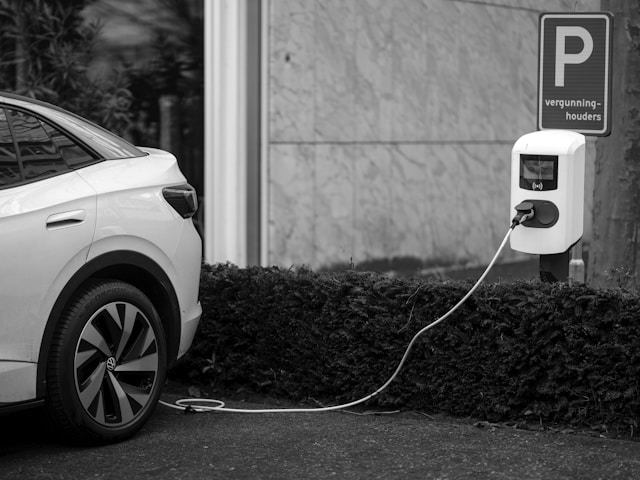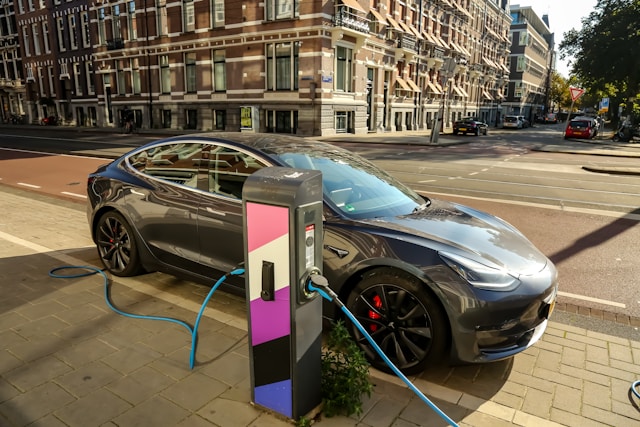In recent years, electric vehicles (EVs) have gone from niche products to mainstream transportation solutions. Consumers are becoming increasingly conscious of environmental impacts, and governments are pushing for decarbonization—creating the perfect climate for EV adoption. With rising fuel costs and a growing concern over climate change, EVs are now seen as a sustainable alternative to traditional gasoline-powered vehicles.
The shift toward electric mobility isn’t just about cars. Buses, trucks, two-wheelers, and even aircraft are gradually making the transition to electric power. This wide-ranging adoption underscores the importance of understanding the underlying technologies, particularly battery advancements and charging infrastructure—the backbone of this revolution.
The Evolution of EV Battery Technology
Battery technology lies at the heart of electric vehicles. Early EVs were hindered by heavy, inefficient batteries with limited range and long charging times. Over the past decade, however, innovations have significantly improved battery performance. Modern lithium-ion batteries now offer greater energy density, longer lifespans, and faster charging capabilities than ever before.
Key players in the industry, such as Tesla, Panasonic, LG Chem, and CATL, are continuously investing in research and development to push the boundaries of battery performance. Solid-state batteries, which promise to further improve range and safety, are on the horizon and could redefine what’s possible in the EV space.
Battery costs have also plummeted, making EVs more affordable. As production scales and recycling technologies improve, we can expect even lower prices and better availability in the coming years. This evolution is crucial for expanding access to EVs and supporting the charging infrastructure needed to sustain them.
Why Charging Infrastructure Is the Cornerstone of EV Adoption
One of the biggest challenges to widespread EV adoption is the development of a reliable and accessible charging infrastructure. Unlike gas stations, which are ubiquitous and convenient, EV charging stations are still unevenly distributed—especially in rural and underdeveloped areas.
The availability of charging options directly affects user confidence and vehicle range anxiety. Without a robust charging network, even the most advanced EVs can seem impractical. Fast-charging stations, in particular, are crucial for reducing downtime and supporting long-distance travel.
Governments and private enterprises are working together to address this issue. Incentives, subsidies, and public-private partnerships are being used to fund new charging stations and upgrade existing power grids. The goal is to ensure that EV drivers have access to safe, fast, and convenient charging—wherever they go.
Types of EV Charging Stations: Level 1, Level 2, and DC Fast Chargers
EV charging comes in several flavors, each offering different speeds and use cases. Level 1 chargers, which use standard 120V outlets, are the slowest but most accessible option. They are ideal for overnight charging at home and can add about 3 to 5 miles of range per hour of charge.
Level 2 chargers operate on 240V circuits and can be installed at homes, workplaces, or public locations. They offer faster charging—typically adding 25 to 30 miles of range per hour. These chargers are suitable for daily use and are increasingly found in apartment complexes, malls, and office buildings.
DC fast chargers (also known as Level 3) are the fastest option available today. These stations use direct current (DC) to bypass the vehicle’s onboard charger, delivering a rapid power boost—often restoring 80% battery capacity in under 30 minutes. While more expensive to install, fast chargers are essential for building a viable charging infrastructure along highways and busy urban centers.
Global Expansion of EV Charging Infrastructure
Countries around the world are investing heavily in expanding EV charging networks. In the United States, the federal government’s Bipartisan Infrastructure Law allocates billions toward creating a national network of 500,000 charging stations. Similarly, the European Union’s Green Deal includes mandates for member states to install chargers every 60 kilometers along major roads.
China, the world’s largest EV market, boasts an extensive network of over a million public charging points. The government continues to incentivize both public and private investments in charging infrastructure, ensuring access across both urban and rural areas.
Emerging markets in Africa, South America, and Southeast Asia are also beginning to develop their own infrastructure, albeit at a slower pace. Partnerships with international companies and NGOs are helping to bridge the gap and make EVs a global phenomenon.
Urban vs. Rural Charging Challenges
While cities are rapidly catching up in terms of EV support, rural regions face unique challenges. Sparse populations and limited power grid capacity can make installing fast chargers economically unviable. Furthermore, long travel distances make range anxiety a more significant issue in rural areas.
To address this, innovative solutions like mobile charging units, solar-powered stations, and battery swapping systems are being tested. These alternatives may help bridge the gap until more permanent charging infrastructure is in place.
Urban areas, on the other hand, face issues related to real estate. High population density means more vehicles but less space for charging stations. Multi-family dwellings often lack the infrastructure to support multiple EVs, leading to the rise of shared and curbside charging systems.
The Role of Renewable Energy in EV Charging

As EV adoption grows, so does the demand for electricity. This raises an important question: where will all this energy come from? Relying on fossil fuels to power electric vehicles defeats the purpose of transitioning to a cleaner transportation system.
That’s where renewable energy comes in. Solar, wind, and hydroelectric power can supply clean electricity to EV chargers, reducing the overall carbon footprint. Smart grids and energy storage systems can balance supply and demand, ensuring that EVs are truly sustainable.
Some companies are even developing solar-powered charging stations that operate off-grid. These systems are ideal for remote areas and offer a scalable solution to expanding charging infrastructure without overloading existing utilities.
Battery Swapping: A Complementary Approach?
While traditional plug-in charging is the standard for EVs, battery swapping is gaining attention as a viable alternative. In this model, EV owners can exchange their depleted batteries for fully charged ones at specialized stations, eliminating downtime entirely.
This method is particularly popular in countries like China, where companies like NIO have invested heavily in automated swapping stations. It offers a different approach to solving the charging infrastructure challenge, particularly for fleet operators and high-mileage drivers.
However, battery swapping also presents its own challenges, including standardization, safety concerns, and high initial investment costs. Nonetheless, it represents a promising area of innovation worth monitoring.
Home Charging: The Most Convenient Option
Most EV owners prefer charging their vehicles at home. It’s convenient, cost-effective, and can be scheduled during off-peak hours to save money. Installing a Level 2 charger at home provides a perfect balance between speed and affordability, especially for those with predictable driving patterns.
Home charging also reduces the strain on public charging infrastructure, allowing these resources to be prioritized for long-distance travelers and urban residents without access to private parking. However, home charging depends on local building codes, electrical capacity, and housing types, making it less accessible for everyone.
Smart home chargers with features like energy monitoring, scheduled charging, and grid feedback are becoming increasingly popular. These technologies offer better energy management and improve the integration of EVs into the broader energy ecosystem.
Corporate Investment in Charging Networks
Tech companies, automakers, and utility providers are all investing in EV charging networks. Tesla’s Supercharger network is perhaps the most well-known, offering a seamless and rapid charging experience for Tesla drivers. Recently, the company announced plans to open this network to other EV brands, expanding access and utility.
Other players like Electrify America, ChargePoint, EVgo, and Shell Recharge are building expansive networks across the globe. These companies are often supported by government grants and private funding, highlighting the economic potential of charging infrastructure.
Fleet operators and rideshare companies are also building their own charging depots to support electric vehicle fleets. These installations require high-power connections, smart energy management, and round-the-clock accessibility to ensure business continuity.

